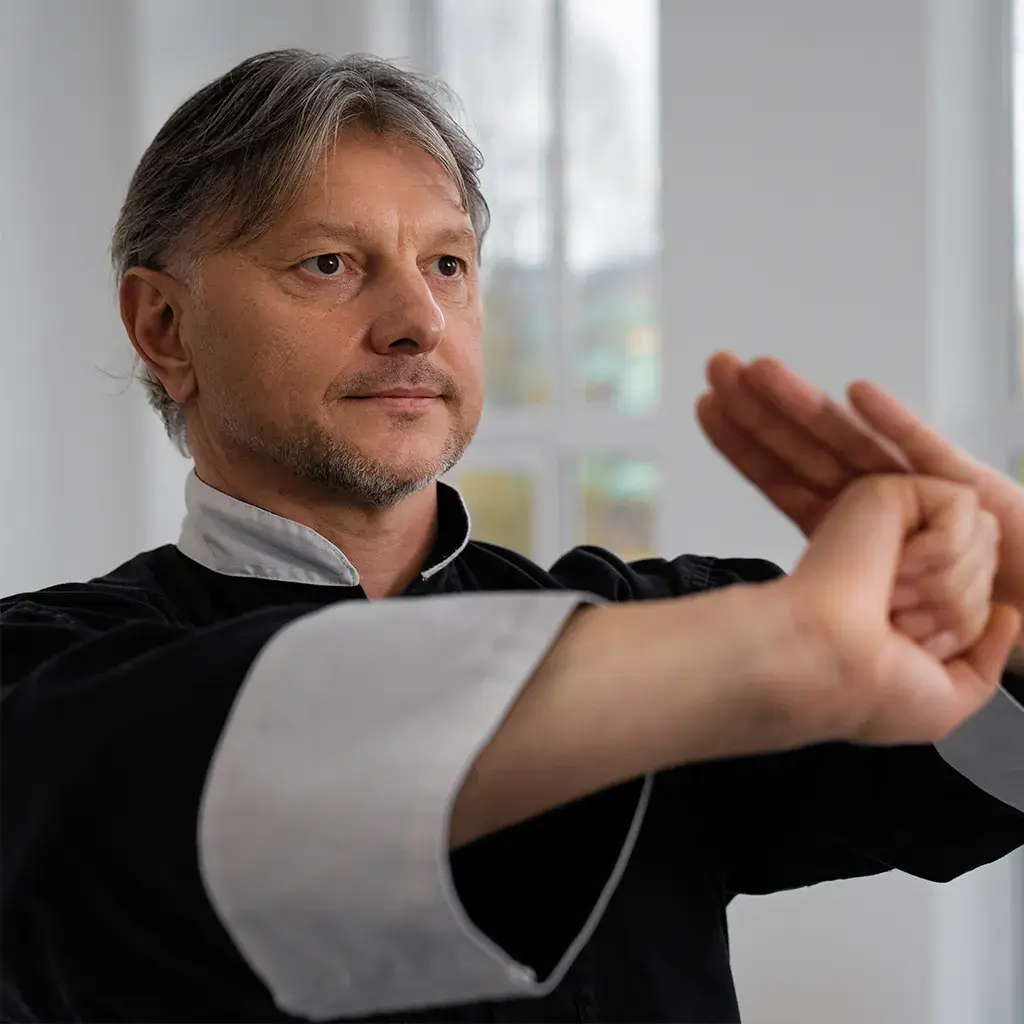In This Blog
Have you ever wondered why martial artists bow before stepping onto the mat? It may look like a small gesture, but it carries deep meaning. In martial arts, etiquette is as important as the techniques you learn. Without it, the dojo would lose the respect and discipline that make training effective.
When you begin your journey, you are not only learning punches, kicks, or self-defence. You are also learning the dojo rules that guide behaviour and shape your mindset. These rules protect you and your training partners while creating an environment where everyone can grow. Clean uniforms, punctuality, and respect for instructors are not just formalities. They show your commitment to martial arts traditions and respect for culture.
As a beginner, understanding martial arts etiquette is your first lesson. It prepares you to train with discipline, humility, and focus. By following these traditions, you step into a community that values respect as much as skill.
Introduction to Martial Arts Etiquette
Martial arts etiquette refers to the set of rules and behaviours that show respect in the dojo. It guides how you interact with instructors, fellow students, and the training space. Following these rules creates a safe, disciplined environment where everyone can learn effectively.
The origins of this etiquette come from centuries-old martial arts traditions, blending cultural values and respect for teachers. Bowing, proper uniform care, and attentive behaviour are all part of this system. By understanding dojo respect, you also connect with the history and philosophy behind each martial art.
Learning etiquette is not just about following rules. It teaches humility, focus, and self-control. Beginners who adopt these practices quickly gain confidence and earn the respect of their peers. Martial arts training becomes a foundation for both etiquette and personal growth, making it an essential part of every student’s journey.
Core Principles of Dojo Etiquette
Dojo etiquette focuses on respect for the space, instructors, and fellow students. Following these principles helps create a safe, disciplined, and welcoming environment for everyone. Understanding and practising these rules also connects you to the long-standing traditions of martial arts.
Respect the Dojo
The dojo is the heart of martial arts practice, and respecting it is essential. Bowing when you enter and leave the dojo shows appreciation for the training space and its traditions. This simple act demonstrates humility and awareness.
Cleanliness is another key aspect of dojo etiquette. Always keep the mat and surrounding areas tidy. Wear a clean uniform and avoid shoes on the training floor. These habits protect everyone and create a safe environment for practice.
You should also respect the overall dojo environment. Speak softly, avoid distractions, and handle equipment carefully. Small actions like these show consideration for instructors and fellow students.
By caring for the dojo, you honour both its physical space and the culture it represents. Respecting the dojo is not just about rules; it shapes your mindset and prepares you to train with focus, discipline, and integrity.
Respect for Instructors
Instructors, whether called sensei, sifu, or master, guide your martial arts journey. Showing respect to them is essential for learning and safety. Listen carefully to their instructions and follow guidance without hesitation. Always address your instructor politely and with the correct title. This small gesture demonstrates humility and acknowledges their experience. Thank them for their time and effort whenever possible.
Respect also means showing commitment through your actions. Arrive on time, focus during practice, and avoid distractions. Your behaviour reflects your attitude toward learning and the art itself. By honouring your instructors, you gain their trust and guidance. This respect strengthens your skills, confidence, and understanding of martial arts traditions. Remember, the relationship with your instructor is a key part of your growth in the dojo.
Respect for Fellow Students
Your fellow students are your partners in learning, and treating them with respect is essential. Always prioritise sparring safety by using controlled movements and following the rules. This prevents injuries and ensures everyone can train confidently. Courtesy is equally important. Greet your partners politely, listen carefully during exercises, and support their progress. Small gestures, like helping a beginner understand a technique, strengthen the training community.
Discipline plays a key role in student respect. Avoid distractions, focus on practice, and maintain patience with others. These habits create a positive environment where everyone can grow their skills. Respecting your training partners shows maturity and builds trust. It also mirrors the values of martial arts traditions, teaching you patience, teamwork, and humility. By practising courtesy, discipline, and safety, you contribute to a supportive dojo culture for all students, including children and beginners.
Traditions Across Martial Arts Styles
Different martial arts styles have unique traditions, yet respect and etiquette remain central to all. Understanding these traditions helps you connect with the culture behind each art and train correctly.
In karate, bowing at the start and end of class is crucial. Students also follow a strict hierarchy, showing respect to senior practitioners. Clean uniforms and proper stance etiquette are emphasised. Judo places great importance on mutual respect. Practitioners bow before and after sparring, honouring both the instructor and their partner. Safety and controlled practice are key traditions.
In taekwondo, rituals include formal greetings, disciplined patterns, and respect for belts and rank. Practitioners show humility when performing techniques and during sparring. Kung fu traditions focus on discipline, meditation, and respect for lineage. Students often learn the history of their style and the philosophy behind each movement. Aikido emphasises harmony and cooperation. Bowing, quiet focus, and careful attention to partners are core practices. Art teaches respect not only for others but for the principles of balance and control.
By learning these style-specific traditions, you deepen your understanding of martial arts. They guide behaviour, strengthen discipline, and connect you to a long history of practice.
Common Dojo Rules Beginners Should Follow
Following dojo rules helps you train safely and earn respect in the martial arts community. As a beginner, practising these rules shows discipline and commitment.
Punctuality
Always arrive on time for class. Being late disrupts the session and shows a lack of respect for instructors and fellow students. Arriving early also gives you time to prepare mentally and physically.
Uniforms (Gi / Dobok)
Wear a clean and properly fitted uniform, whether it is a gi or dobok. Your uniform represents the dojo and your commitment. Keep it neat and avoid wearing jewellery during training.
Belt Respect
Your belt reflects your rank and progress. Treat it with care and avoid unnecessary handling. Never step on your belt or another student’s belt, as it shows disrespect.
Silence and Focus
Maintain quiet and focus during class. Avoid talking while instructors are demonstrating techniques. This behaviour allows everyone to concentrate and promotes a disciplined environment.
By following these common dojo rules, you demonstrate respect for the art, your instructors, and fellow students. They also help you develop discipline and prepare for a successful martial arts journey.
Why Etiquette Matters Beyond the Dojo
Martial arts etiquette is not only for the dojo; it influences your behaviour in daily life. Discipline, humility and respect learned during training carry over into school work and relationships. Practising etiquette teaches self-control, patience and focus, helping you make thoughtful decisions and manage conflicts responsibly.
Respect for culture extends beyond martial arts. By valuing others, listening carefully and showing courtesy, you strengthen relationships and build trust. Following dojo rules and traditions shapes your mind, improves character and develops life skills that support personal growth and ethical behaviour in all areas of life.
Quick Etiquette Checklist for Beginners
Use this checklist to practise martial arts etiquette and show respect in the dojo. Following these simple steps helps you stay disciplined and focused.
- Bow when entering and leaving the dojo to show respect.
- Keep your uniform clean and properly worn at all times.
- Listen carefully to instructors and follow their guidance.
- Treat fellow students with courtesy and avoid unnecessary force.
- Maintain focus during class and avoid distractions.
- Arrive on time to show commitment to your training.
- Show humility and patience while learning new techniques.
By following this checklist, you build discipline and respect for culture. These habits not only improve your skills but also help you grow personally and socially.
The Role of Etiquette in Your Martial Arts Journey
Martial arts etiquette is the foundation of every training experience. By following dojo rules and respecting traditions, you build discipline and focus from the very first class. Practising these habits helps you grow not only in skill but also in character. Bowing, listening to instructors and treating fellow students with courtesy all reflect respect culture and create a positive training environment.
Understanding and applying dojo rules connects you to the history and philosophy behind each martial art. These traditions guide behaviour, shape mindset, and prepare you for challenges both inside and outside the dojo. Learning etiquette consistently strengthens your journey and deepens your appreciation for martial arts. Our articles on YourSite provide detailed tips, checklists, and style-specific guidance to help you follow etiquette confidently.


